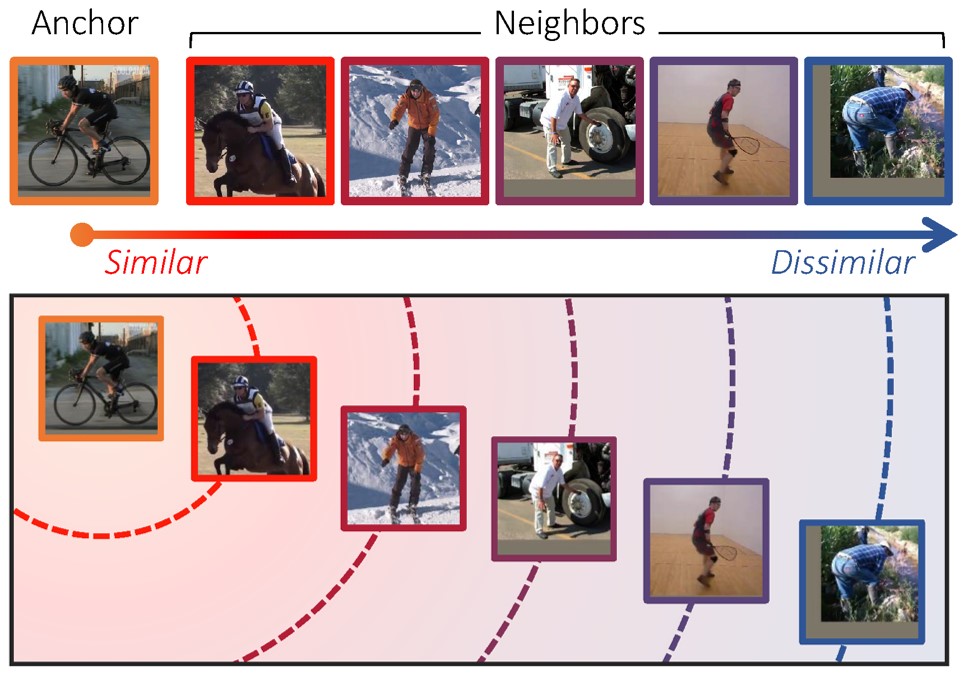If you find this work useful in your research, please consider citing:
@inproceedings{kim2019deep,
title={Deep Metric Learning Beyond Binary Supervision},
author={Kim, Sungyeon and Seo, Minkyo and Laptev, Ivan and Cho, Minsu and Kwak, Suha},
booktitle={Proceedings of the IEEE Conference on Computer Vision and Pattern Recognition},
pages={2288--2297},
year={2019}
}
- Python >=3.6
- Pytorch >=0.4.1
- tqdm (pip install tqdm)
- scipy
- tensorboardX
- Download pretrained human pose dataset with labels from here
- Extract the zip file into
./data/
python main.py --help
# Train a embedding network of resnet34 (d=128)
# using logratio loss with **dense triplet sampling**.
python main.py --loss logratio \
--model resnet34 \
--result-name dense_Logratio \
--optimizer sgd \
--lr 0.01 \
--lr-decay 1e-4 \
--batch-size 150 \
--num-NN 5 \
--embedding-size 128 \
--sampling dense \
# Train a embedding network of resnet34 (d=128)
# using triplet loss (margin=0.03) with **dense triplet sampling**.
python main.py --loss triplet \
--is-norm True \
--model resnet34 \
--result-name dense_Triplet \
--optimizer sgd \
--lr 0.01 \
--lr-decay 1e-4 \
--batch-size 150 \
--num-NN 5 \
--embedding-size 128 \
--sampling dense \
# Train a embedding network of resnet34 (d=128)
# using triplet loss (margin=0.2) with **binary triplet sampling**.
python main.py --loss triplet \
--is-norm True \
--model resnet34 \
--result-name naive_Triplet \
--optimizer sgd \
--lr 0.01 \
--lr-decay 1e-4 \
--batch-size 150 \
--embedding-size 128 \
--sampling naive \
